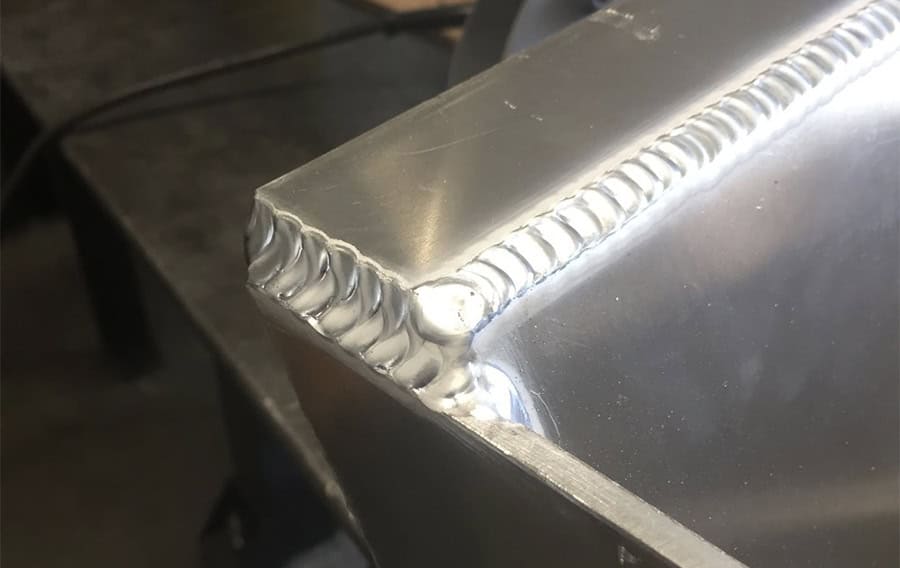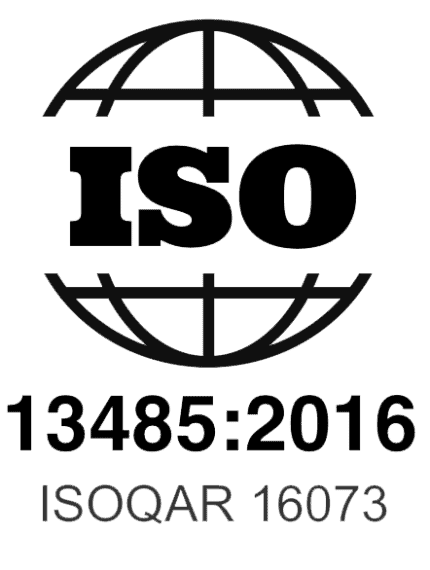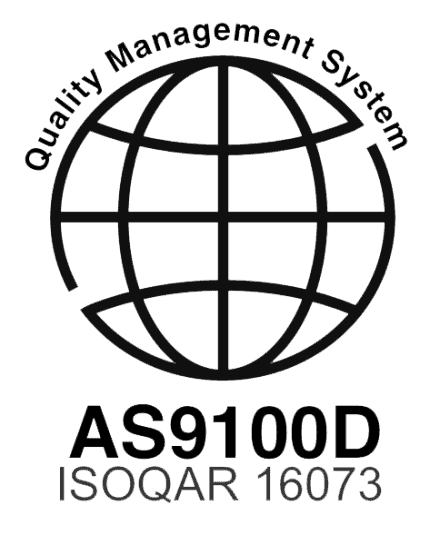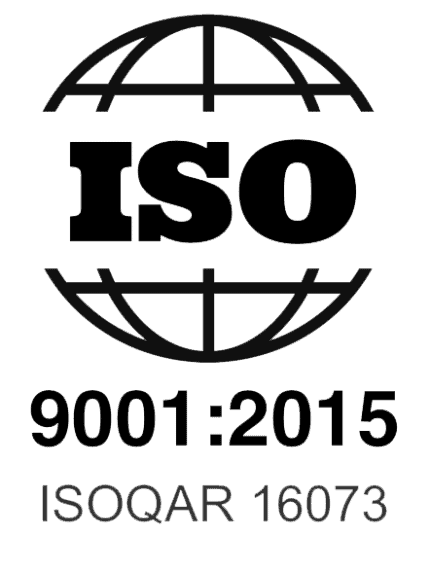As it requires less fixturing and labor than our complementary services, electron beam, laser welding and laser hermetic sealing, TIG is an ideal lower-cost solution to other welding technologies offered at EB Industries. Customers often come to EB Industries with projects that are so complex, they may not even know the best welding technology to deploy, trusting our engineers to develop the perfect solution with no bias or preference driven just by what tool we may happen to provide.

Now offering the full spectrum of welding services, EB Industries is in an ideal position to deploy just the right welding technology to address any customer application. In our role as welding service provider to some of the most demanding applications in the world, EB delivers high-quality, mission-critical backed by a technical expertise and quality regimen that is uncommon among welding service providers.
EB Industries is ISO 9001:2015/AS9100D and NADCAP certified and has full engineering and metallurgy capabilities. Furthermore, we offer extensive pre- and post-processing services to provide the complete range of value-added partnerships with our customers.
What is TIG Welding
TIG welding creates an arc between the tungsten electrode and the workpiece. The process uses an inert shielding gas—typically argon or helium—to protect the weld area from atmospheric contamination. Unlike other welding techniques, TIG welding does not rely on a consumable electrode.
Application Advantages of TIG Welding
High-Quality Welds
TIG welding produces clean, precise and aesthetically pleasing welds with minimal splatter.
Strong, Reliable Joints
TIG welds are strong, ductile and corrosion-resistant with minimal defects such as porosity and inclusion. The welds are ideal for critical applications in the aerospace and medical industries.
Lower Cost Weld Technology
TIG welding requires no fixturing and lower labor costs as a result. Given that, TIG welding is a less expensive process than electron beam welding, laser welding or laser hermetic sealing.
Welds Difficult Shapes
The process can weld difficult-to-access joint locations and structures that cannot be cost-effectively mounted in a fixture. TIG welding operates in horizontal, vertical and overhead welding positions.
Welds Crack-Sensitive Materials Without Filler
With TIG welding, filler material is not needed to weld crack-sensitive material, reducing material costs and simplifying the process.
Excellent for Thin Materials
TIG welding welds thin gauge metals without warping and minimal distortion due to heat.
Welds a Wide Range of Materials
The TIG method welds both ferrous and non-ferrous metals.
Cleaner Welds
TIG welding uses inert shielding gas and does not require flux, eliminating post-weld slag cleanup. It also generates less smoke and fumes, substantially reducing contamination risk.
Precise Control
TIG welding enables adjustment of heat input to create intricate and detailed welds on high-precision work for the aerospace, automotive, and medical industries.
Strong Fillet Welds
TIG welding creates a stronger fillet weld than other welding processes.
Comparison of Electron Beam Welding, Laser Beam Welding and TIG Welding
| Feature | Electron Beam Welding (EBW) | Laser Beam Welding (LBW) | Tungsten Inert Gas (TIG) Welding |
|---|---|---|---|
| Heat Source | Focused electron beam | High energy laser beam | Electric arc |
| Shielding Method | Vacuum environment | Shielding gas (argon/helium) | Shielding gas (argon/helium) |
| Weld Penetration | Deep (up to 2 inches in a single pass) | Moderate to deep (determined by type of laser) | Shallow to moderate |
| Heat-Affected Zone | Smallest due to the vacuum environment | Small to moderate | Controllable with adjustable heat source |
| Material Compatability | Most metals, including refractory and dissimilar metals | Most metals, including highly reflective materials like copper and aluminum | Wide range of metals, including ferrous and non-ferrous metals, can work with crack-sensitive materials and weld difficult-to-access joints |
| Welding Crack-Sensitive Material | Filler required and labor-intensive | Filler required and labor-intensive | Filler not needed |
| Fixturing | Required | Required | Not required, can weld in complex geometries |
| Forming Fillet Welds | Not an ideal process | Not an ideal process | Forms strongest fillet welds |
| Distortion and Stress | Minimal | Low to moderate | Minimal on thin gauge metals due to control of heat source |
| Automation Suitability | Easily automated | Easily automated | Typically, manually controlled |
| Cost Effectiveness | High initial cost | Moderate to high setup cost | Low setup cost |
Industrial Applications
Aerospace Industry
TIG welding is widely used in the aerospace industry to create lightweight, high-strength joints in aluminum, titanium and other alloys. The precision of TIG welding allows for the creation of components with minimal distortion and a high degree of structural integrity, which is essential for ensuring the safety and reliability of aircraft. Applications include welding fuselage components, engine parts and landing gear.
Automotive Industry
In the automotive industry, TIG welding is commonly used for welding stainless steel exhaust systems, turbochargers and other critical components that require high strength and resistance to corrosion. TIG welding allows for the production of strong, aesthetically pleasing welds that can endure the harsh conditions within automotive systems, especially in areas exposed to heat and chemical stress.
Food and Pharmaceutical Industries
TIG welding is a preferred method in industries like food and pharmaceuticals due to its clean, hygienic welds. Stainless steel, which is commonly used in equipment and piping in these industries, can be welded without contaminating the weld zone. This is particularly important when working with materials that will come into direct contact with food, beverages or pharmaceuticals. TIG welding produces minimal spatter, ensuring that the weld area remains clean and smooth, which is essential for food-grade and medical-grade applications.
Medical Industry
TIG welding is widely used in the medical industry for manufacturing surgical instruments, implants and medical tubing due to its precision and clean welds. It is ideal for stainless steel, titanium, and cobalt-chrome components, ensuring biocompatibility and corrosion resistance. Medical implants such as hip replacements, bone plates, and dental prosthetics rely on TIG welding for strong, contamination-free joints. This method is also used in fabricating catheters, endoscopic tools, and diagnostic equipment, where smooth, defect-free welds are essential.
Quality Management for TIG Welding
EB Industries maintains the highest levels of quality to perform welding services for critical, high-reliability applications in a variety of mission-critical industries, such as aerospace and medical applications. We are certified and compliant to:
- International quality standard, ISO 9001:2015/AS9100
- Medical device standard, ISO 13485:2016
- Aerospace quality system standards, AC7110/3 Rev. E and AC7004
- Quality control and inspection system standard, MIL-I-45208A
- Metrology program standard, MIL-C-45662A.
Personnel
All our TIG welding technicians are trained and compliant with MIL-STD-1595A specifications. Additionally, they are supported by full engineering and maintenance staff, a dedicated quality control department and an in-house machine shop.
Additional Services
We offer an extensive set of pre- and post-processing services to accompany our TIG welding work:
Pre Processing
- CAD/CAM Product Design and Weld Design
- Tooling Design & Fabrication
- Parts Cleaning & Assembly
- Strategic Sourcing and Subcontractor Contract Management
Post Processing
- Metallurgic Evaluations
- Leak Testing
- Destructive and Non-Destructive Testing
- Post Weld Thermal Treatment



